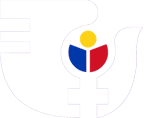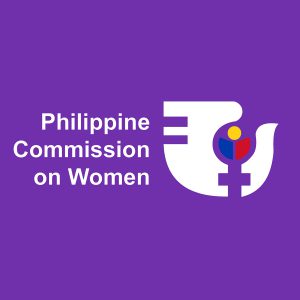PCW-OPAP Joint Memorandum Circular No. 2014-01: Integration of Women, Peace and Security Programs, Activities and Projects in Annual GAD Plans and Budgets and GAD Accomplishment Reports
| Date | 25 September 2014 |
| To | Member Agencies of the National Steering Committee on Women, Peace and Security (NSCWPS), Payapa at Masaganang Pamayanan (PAMANA) Program Partner Agencies, and Implementing Agencies of the Philippine National Action Plan on Women, Peace and Security (NAPWPS) |
| Subject | Integration of Women, Peace and Security Programs, Activities and Projects (PAPs) in Annual Gender and Development (GAD) Plans and Budgets (GPBs) and Gender and Development Accomplishment Reports (GAD ARs) |
1.0 GUIDELINES
Pursuant to Republic Act 9710, otherwise known as the Magna Carta of Women, and in fulfillment of the government’s commitment to uphold women, peace and security through the implementation of the Philippine NAPWPS, NSCWPS member agencies, agencies that implement PAPs in conflict-affected/post-conflict areas such as those covered by the PAMANA, and responsible agencies identified in the NAPWPS shall develop and integrate PAPs addressing women, peace and security concerns in their annual GPBs and, consequently, report the status or results of the implementation of such PAPs in their annual GAD ARs following the Guidelines for the Preparation of Annual Gender and Development Plans and Budgets and Accomplishment Reports to Implement the Magna Carta of Women issued by the Philippine Commission on Women (PCW), the National Economic and Development Authority (NEDA) and the Department of Budget and Management (DBM) under Joint Circular 2012-01.
This Joint Memorandum Circular provides specific guidelines to implement the NAPWPS, and provides additional references in terms of identifying gender issues and gender- responsive PAPs related to women, peace and security. These gender issues and corresponding PAPs shall be integrated in the annual GPBs and GAD ARs of concerned agencies and shall not constitute a separate plan.
Thus, in the preparation of their respective agency GPBs and GAD ARs, the following supplementary guidelines shall be observed:
1.1 In the formulation of GPBs, concerned agencies shall consider and integrate women, peace and security issues and corresponding strategies identified under the NAPWPS and its Results Framework (see Annex A); the Philippine Development Plan, 2011-2016, particularly Chapter 8; the Women’s Empowerment, Development and Gender Equality Plan, 2013-2016, particularly Chapter 12 (see Annex B); and other similar plans promoting women’s rights and gender equality in peace and security that fall within their respective mandates.
1.2 Concerned agencies shall also consider relevant provisions related to women, peace and security concerns of national laws, such as Republic Act 9851 or the Philippine Act on Crimes Against International Humanitarian Law, Genocide, and Other Crimes Against Humanity; international laws and human rights treaties, particularly the Rome Statute of the International Criminal Court and the Convention on the Elimination of All Forms of Discrimination Against Women (CEDAW); consensus agreements such as the Beijing Platform for Action (BPfA) and the Millennium Development Goals (MDGs); and international declarations, resolutions and commitments, particularly United Nations Security Council Resolutions (UNSCRs) 1325, 1820, 1888, 1889, 1960, 2106 and 2122.
1.3 To be able to properly identify women, peace and security issues, concerned agencies shall conduct gender-sensitive conflict analysis in conflict-affected/post-conflict areas and situations. They shall also generate gender statistics and sex-disaggregated data, as well as conflict and non-conflict differentiated information and use such as basis for planning, programming and policy formulation.
1.4 In line with the main pillars of the NAPWPS, concerned agencies shall give importance to PAPs that (1) address emerging and/or continuing issues and concerns on the protection of women and girls in conflict-affected areas, (2) respond to conflict-related violence against women (VAW) and/or sexual and gender-based violence (SGBV) and (3) promote women’s participation in peacebuilding, peacemaking and conflict prevention and resolution mechanisms.
1.5 In filling out the GPB and GAD AR templates, concerned agencies shall specifically identify the women, peace and security-related issue/s under the ‘Gender Issue and/or GAD Mandate’ column by labeling them as ‘NAPWPS’ (see Annex C and D for sample GPB and GAD AR).
1.6 Agencies implementing PAPs in conflict-affected and post-conflict areas should ensure the gender-responsiveness of their peace, security and development programs, which may be assessed using the Harmonized Gender and Development Guidelines (HGDG) tool. Results of the assessment may be used to attribute a portion of the program’s annual budget to the agency’s GAD budget.
1.7 To be able to properly identify and effectively address women, peace and security concerns, agencies are encouraged to conduct skills development and capacity building activities on gender-sensitive conflict analysis, as well as gender-responsive, conflict-sensitive and peace-promoting planning, programming, budgeting, monitoring and evaluation for their NSCWPS technical working group representatives, GAD Focal Point System members and program officers implementing PAPs in conflict-affected and post-conflict areas.
2.0 SPECIFIC ROLES
The PCW and the Office of the Presidential Adviser on the Peace Process (OPAPP) shall perform the following functions:
2.1 Philippine Commission on Women
2.1.1 Provide OPAPP copies of endorsed GPBs and GAD ARs of concerned agencies; and
2.1.2 Assist OPAPP in the development of policies and tools for the implementation, monitoring and evaluation of NAPWPS PAPs.
2.2 Office of the Presidential Adviser on the Peace Process
2.2.1 Provide agencies capacity development trainings on gender-sensitive conflict analysis, whether as a stand-alone training or within the Conflict-Sensitive Peace Promoting (CSPP) program, as well as on UNSCRs 1325/1820 and NAPWPS orientation, planning, programming, budgeting, monitoring and evaluation;
2.2.2 Provide technical assistance in the implementation of concerned agencies’ NAPWPS-related PAPs identified in their GPBs;
2.2.3 2.2.3 In coordination with PCW, formulate tools that will aid in enhancing the formulation, implementation, monitoring and evaluation of NAPWPS-related PAPs; and
2.2.4 2.2.4 From GPBs and GAD ARs submitted to PCW, document and prepare a consolidated report of NAPWPS PAPs of implementing agencies.
3.0 TRANSITIONAL PROVISION
Since the GAD planning and budgeting cycle for FY 2015 has ended, concerned agencies who have not integrated NAPWPS PAPs in their 2015 GPB shall submit to PCW their adjusted 2015 GPBs integrating such. Thereafter, all concerned agencies shall integrate NAPWPS PAPs in their annual GPBs and GAD ARs following the guidelines.
4.0 EFFECTIVITY
This Joint Memorandum Circular shall take effect immediately
(Sgd) Remedios R. Rikken
Chairperson
Philippine Commission on Women
(Sgd) Teresita Quintos Deles
Secretary
Office of the Presidential Adviser on the Peace Process
DOWNLOAD a copy.

